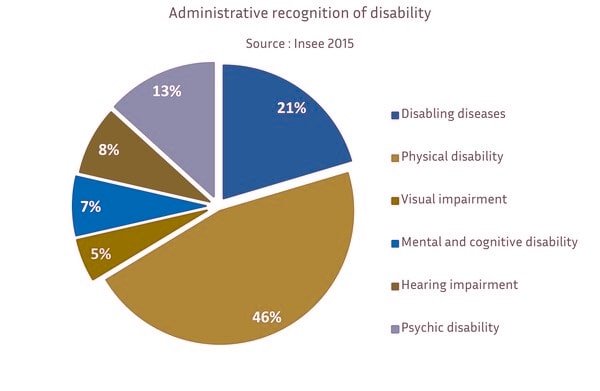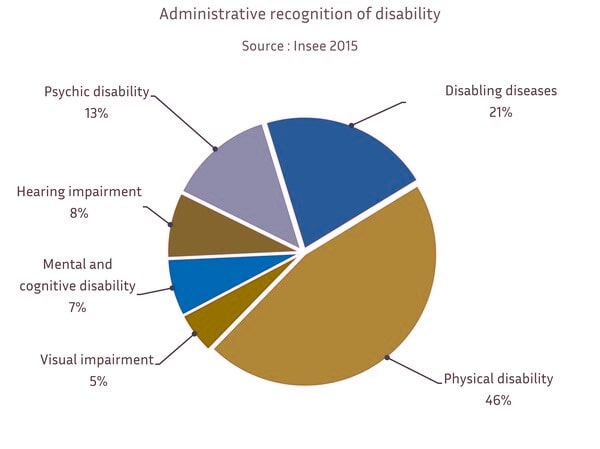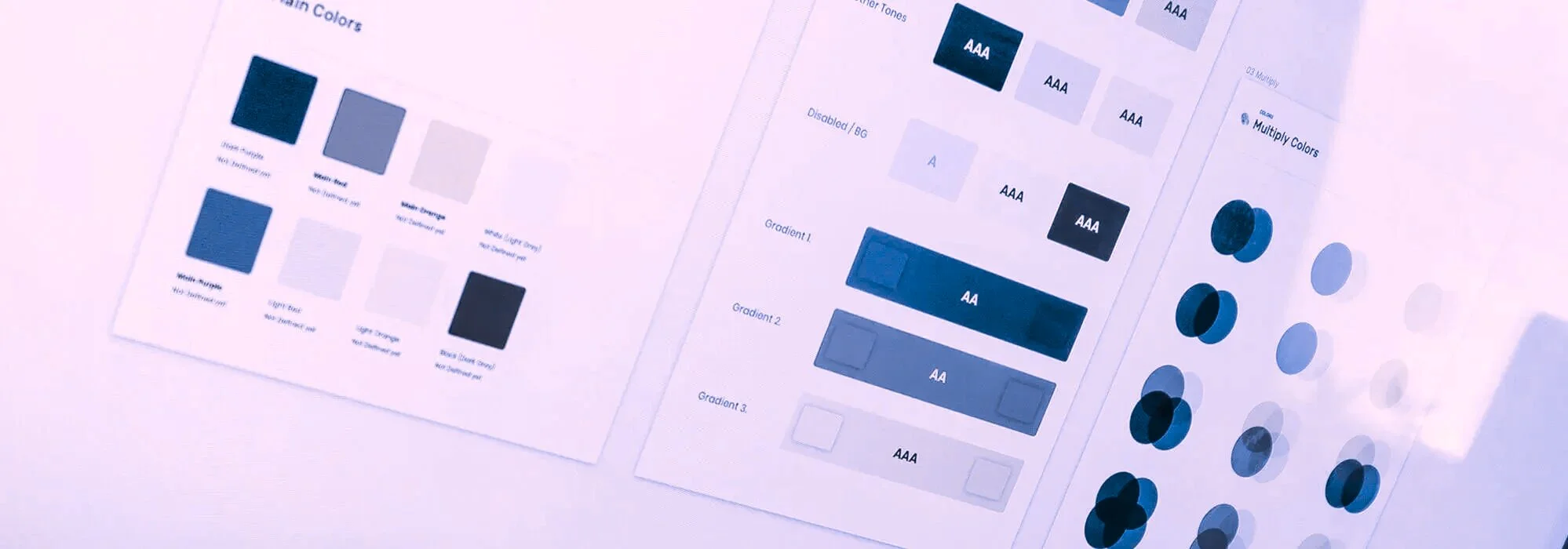 République Française (liberté, égalité, fraternité) Inria
République Française (liberté, égalité, fraternité) Inria
Colour blindness
Colour blindness is a form of visual impairment that affects how people see colours.
There are multiple types of colour blindness, which can be broken down into 7 families.
- 4 families of « red-green » colour blindness
- 2 families of « blue-yellow » colour blindness
Roughly 8% of men and 0.5% of women struggle with colour perception.
Information & colour
Example of chart not accessible

Detailed image description
Administrative recognition of disability
Source : Insee 2015
- disabling disease 21%
- Physical disability 46 %
- Visual impairment 5%
- Mental and cognitive disability 7%
- Hearing impairment 8%
- Psychic disability 13%
The keyrs are represented using colour alone
Making it difficult for people with colour blindness to pick out information.
Example of an accessible chart

Detailed image description
Administrative recognition of disability
Source : Insee 2015
- disabling disease 21%
- Physical disability 46 %
- Visual impairment 5%
- Mental and cognitive disability 7%
- Hearing impairment 8%
- Psychic disability 13%
The keys can be understood regardless of the colours used.
Alternative formatting means information is conveyed irrespective of the colour.
Things such as textures, shapes and clear headings can also be added to allow people with colour blindness to access information.
